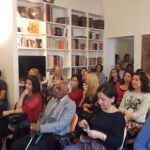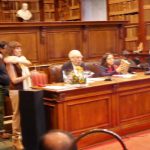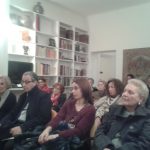Lectures and Seminars
Past Events
The events and lectures can also be followed in real-time via on online teleconferencing facility.
Detailed information on the seminars and other initiatives will be available on the website shortly before each event
Sir Salman Rushdie: a plea for Reason by Olaf shom Kirtimukh
 18 May 2021
18 May 2021
webinar
Rukmini Devi, a bridge between tradition and innovation
by Lakshmi Vishwanathan
with the participation of Rosella Fanelli
Past Events
 Saturday 16 May 2020
Saturday 16 May 2020
webinar
A Journey into pictorial space : Pattachitra of Orissa and West Bengal
Prof Sanjukta Das Gupta & Dr. Tiziana Lorenzetti
Maestro Bhai Baldeep Singh will conduct
live streaming
https://www.facebook.com/isasrome/
Monday 11 November 2019 
Lecture
Jainism: a historical religious journey through art.
In collaboration with the Gregorian University, Rome
Saturday 2 February 2019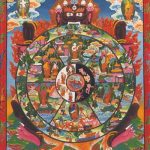
Lecture
The vortex of conditioning: destiny, death and rebirth according to Indian Buddhism
Bruno Lo Turco
Sapienza, University of Rome
free entrance
Sunday 20 January 2019
 Lecture
Lecture
The life of Buddha in ancient Indian Art
Wednesday 23 May 2018
Lecture
DEVADASIS -TEMPLE DANCERS OF ANCIENT SOUTH INDIA. THE SECRET HISTORY.
Lakshmi Viswanathan
Dance and dancers have been a part of Temples and royal courts in South India for several centuries. The purpose of dance as ritual, and as entertainment with a spiritual as well as secular content is a well known fact. The life and personality of the dancer who had dedicated herself to this duty has an interesting history over the ages. Lakshmi Vishwanathan who has authored a definitive book on the subject ” Women of Pride, the Devadasi Heritage ” shares her research into the subject with anecdotes, historical notes, and her own personal experiences as a modern inheritor of the dance of a bygone era.
Her talk will be accompanied by visuals.
in English with Italian translation
free entrance
Saturday 28 April 2018
Lecture
READING & VIEWING HISTORIES OF ASIAN FOODS & KITCHENS
This lecture explores books and images from past centuries that focus on kitchens and cooking and how they can help us to explore social and cultural histories of cooks, cuisine, societies, and cultures in different parts of Asia, using examples from medieval Islamic, early modern Chinese, and modern South Asian cultures. Pre-modern books about food were produced by and for elite members of society and were mainly expressions of aesthetics & dietetics. But this starts changing once the technology of print transforms the production and consumption of information about foods and kitchens. The paper also examines the comparative roles of men and women in kitchen work and in literature and  media about food and cooking from South Asia.
media about food and cooking from South Asia.
in English with Italian translation
free entrance
Food and Culture in South Asia
Interview to Jayeeta Sharma by Fabiola Fagnani
Saturday 11th November 2017
Seminar
‘Voices of Freedom, History, Society, and Culture in the 70th Year of India’s Independence’.
India: a Symposium to celebrate 70th year of Independance
- welcome addresses
- Angelica Library
- Kathak dance
Tuesday 24th October 2017
lecture
 City Planning in Colonial and Independent India: Building Citizenship and Identity.
City Planning in Colonial and Independent India: Building Citizenship and Identity.
Julia A.B. Hegewald
in English with Italian translation
free entrance
Wednesday 12 April 2017
Lecture
The journey of Indian women through time
Deepa Gopalan Wadhwa
(former Ambassador to Japan, Sweden and Qatar)
The Indian woman presents a paradox to the world. While India had the longest serving woman Prime Minister in the world in Mrs Indira Gandhi, and has had a woman as President too, along with several women in eminent positions in all walks of life, the fact is that India is a culturally complex and conservative society , riven by disparity, and the status of Indian women requires some analyses to be understood.
Ambassador Deepa Gopalan Wadhwa, herself an example of the success achieved by Indian women, will speak about the march of Indian women to empowerment and how they are winning the battles for their rights.
in English with Italian translation
free entrance
Saturday 18 March 2017
Lecture
Ruin, Destruction, Revival: from Antiquity to Isis
Tuesday 15th November 2016
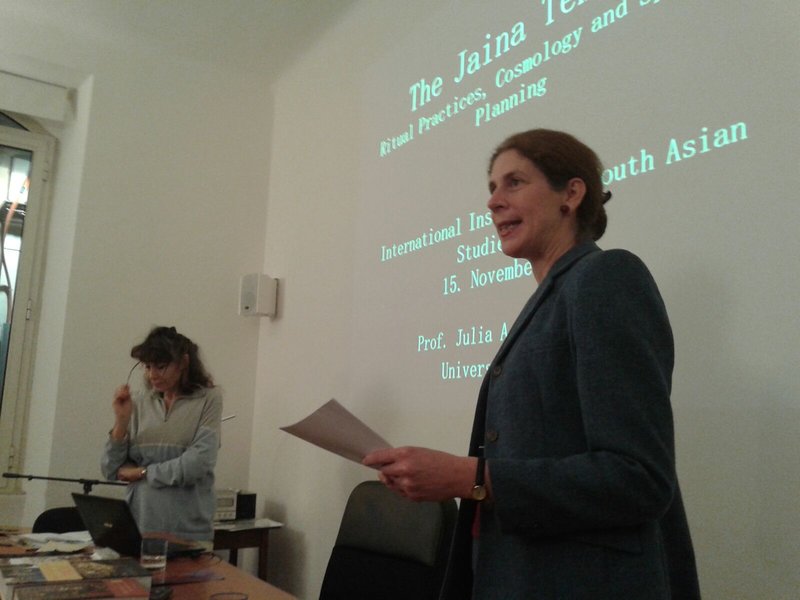 Lecture
Lecture
JAINISM.
The Jaina Temple: Ritual Practices, Cosmology and Spatial Planning
In English, with Italian translation.
Julia A.B. Hegewald with the participation of Tiziana Lorenzetti
 Thursday 27 October 2016
Thursday 27 October 2016
Presentation of the Seminar
‘Religion and Music in India. Devotional Songs and practice of mantra’
The Presentation will be providing a few practical examples to serve as Models for the meditational groups which will subscribe to the four encounters of the Seminar.
Details on participation will be furnished during the Presentation
The Seminar will be guided by the professional Singer Marcella Candilera and will be introduced and commented by Prof. Fabio Scialpi
 5 March 2017
5 March 2017
Presentation of the Seminar
Extended Consciousness. Architecture in harmony with
vital rhythms in Man,
by T. Rettaroli, architect, Dr. M. Nannini, Dr. T. Lorenzetti.
The seminar aims to embrace a number of fundamental themes in the modern and ancient architecture:
- energy-interconnectedness between place, architectural structure, cosmos and man: feng shui – quantum physics;
- cosmic symbolism in ancient religious monuments: the Hindu Temple;
- the history of the Spirit in biological sciences: neuroscience and bio-energy.

 Saturday 22 October 2016
Saturday 22 October 2016
Lecture in the occasion of the thirtieth Anniversary of Krishnamurti’s demise
Freedom from the Known: An Inroduction to Jiddu Krishnamurti’s Thought
In Italian with English summary.
 Saturday 14th May 2016
Saturday 14th May 2016
Lecture
Athanasius Kircher, India and Orient.
The German Jesuit Athanasius Kircher (1602-1680) is one of the most original figure of the seventeenth century European culture. He was a mathematician, a physicist, a life-scientist, an inventor -he is credited with the invention of the magic lantern and the megaphone-, an Egyptologist. Kircher did not handle India specifically, yet India was a pivotal part of his own conception of universal history, since he saw her as a fundamental link for the diffusion of Christianity as well as idolatry in far off Asia. Kircher spent most of his life in Rome as a teacher of mathematics and Oriental languages at the Collegio Romano, the university of the Society of Jesus. He collected a variety of objects and information from the Society missionaries throughout the world ―which allowed him the making of a museum then considered one of the most important in Europe. Thanks to his ceaseless work, the Collegio Romano, along with Propaganda Fide, made of Rome a theological observatory on other cultures, on the Orient particularly. In the following century, analogous, but deeply different observatories were set up by the Asiatic Societies in London and Paris. Kircher’s fame was enormous in his life-time; he enjoyed the esteem of such great personalities as Bernini, Velazquez, Poussin, Gassend, Leibniz. In the course of time, however, the many blunders in his huge scientific production made him sink into a sort of oblivion. Over the latter thirty years or so, however, there has been a true revival of his works thanks to a flourishing of studies and rediscoveries.
Saturday 9th April 2016
Lecture
The Theravada Buddhism in the West .
The School of the Forest Monks of the Venerable Ajahn Chah
Saturday 19th March 2016 
Conference
Gandhi’s Legacy in Italy: G. Lanza del Vasto
Ambrogio Bongiovanni, Pontificia Università Urbaniana
Paolo Trianni, Pontificio Ateneo Sant’Anselmo
Mario Prayer Sapienza, University of Roma
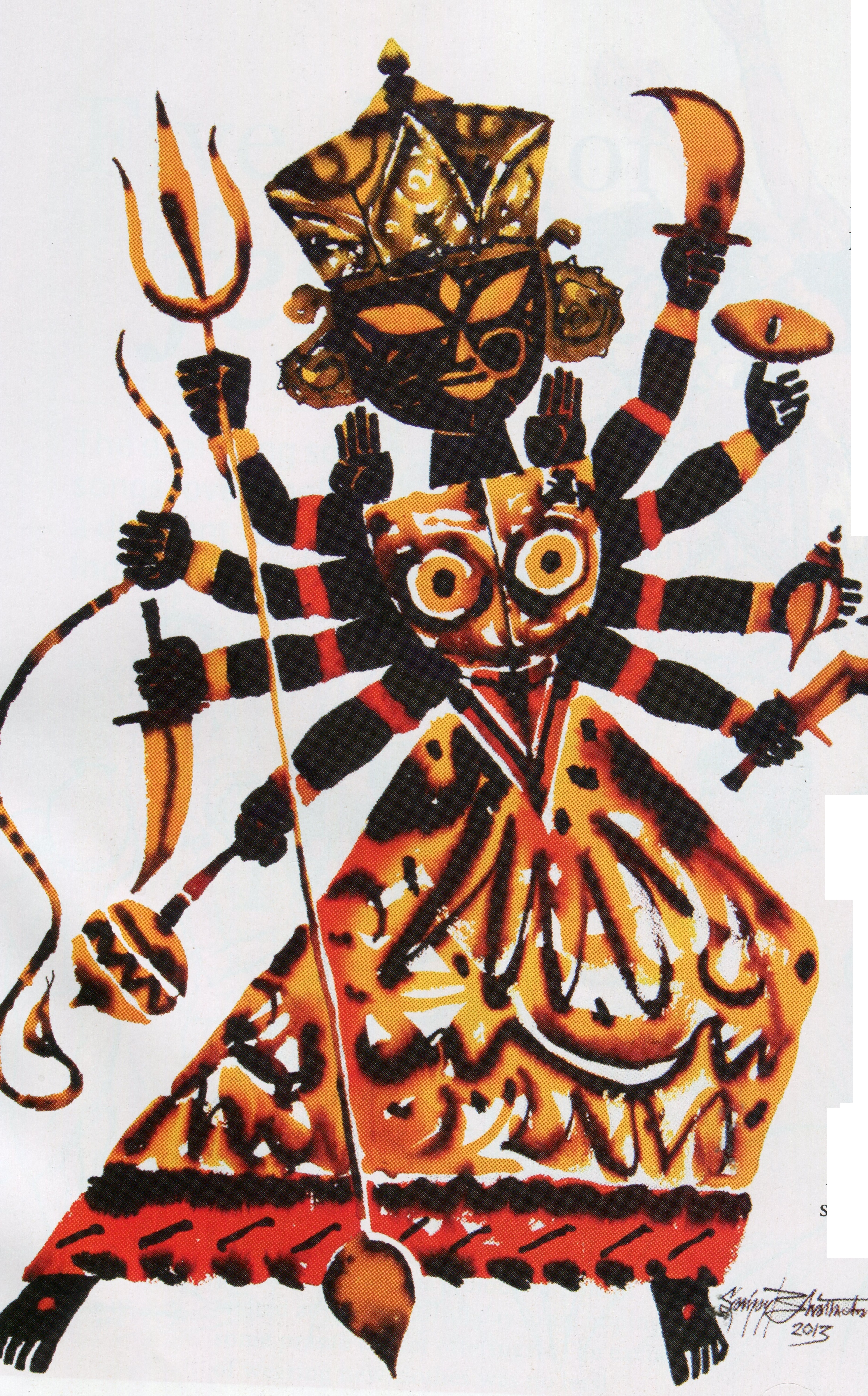 Thursday 11 February 2016
Thursday 11 February 2016
Lecture
The Thousand Names of the Goddess. The Great Mother in the Indian Civilisation
Fabio Scialpi
Friday 22th May 2015
Conference
War in the core of Asia : Afghanistan. A land between history and geopolitics
Marika Guerrini, Sergio Vasarri, Claudio Landi
 March 8th 2015
March 8th 2015
Lecture
Guido Gozzano’s India. Anatomy of a Fiction
Giuseppe Flora
In Italian with English translation.
Gozzano left for India along with his friend Giacomo Garrone on 16 February 1912. On March 5 they reached Bombay — from Bombay they were to move back home on 15 or 25 April 1912. The sea-voyage was suggested as a possible remedy to the tuberculosis affecting the poet since 1907. All the remedies eventually proved useless: Gozzano died on 9 August 1916, aged 32.
One could speak of two different voyages: the real one, that lasted nearly three months (from mid-February to early May 1912), and an imaginary one much longer— from the end of 1912 till summer 1913. In the real voyage Gozzano visits Port Said and Cairo on his way to India, then Bombay and Ceylon – where he spent most of his time. In the imaginary voyage Gozzano pretends to visit many more places: Goa, Madurai, Madras, Haiderabad, Golconda, Delhi, Agra, Jaipur, Cawnpore (Kanpur), Benares.
The fictitious tour provides the setting for Gozzano’s Indian tales. They were serialized as ‘Letters from India’ and published in various journals between January 1914 and September 1916. In 1917 they were collected in a posthumous book, Verso la cuna del mondo (Toward the Cradle of Mankind), with the exclusion of three stories.
The editors of the posthumous book of Gozzano apparently did their best to conceal the fictional character of his supposed letters; such operation worked well for nearly fifty years. The truth about Gozzano’s journey was to come out slowly —out of philological research and archives. Yet, as early as 1918 there was already a clue that could have possibly revealed the artificial character of Gozzano’s Indian prose. The clue lies in one story excluded by the main collection.
 March 1st 2015
March 1st 2015
Lecture
Afghanistan Today and Yesterday
In Italian with English translation.
In March 2001 the Taliban regime in Afghanistan destroyed, with explosives, the Buddhas of Bamiyan. Many other works of art and archaeological sites have been destroyed as well. It is fair to ask what the future of the country is going to be and to wonder about what possibilities there still might be to conserve the heritage artifacts that were brought to light in the 1920s and ’70s and also in the recent years. Also in the past this crossroads of Asia was subject to many forces, as can be seen from the extreme variety of architectonic and figurative monuments. They do not illustrate a unified and shared history, rather they show the caesuras and contradictions of history.
February 8th 2015
Lecture
The Power of Knowledge: the “thinking class” in classical and modern India.
Knowledge in India has always been the prerogative of the upper caste which has often been most unwilling to share knowledge, since knowledge is a means of control. This talk will trace this phenomenon from the epics to modern time.
In English with Italian translation.
 January 11th, 2015
January 11th, 2015
Lecture
Royal Cuisine: Food for Nawabs, Kings and Emperors.
Stella Sandahl
In English, with Italian translation.
Although eating is the most essential human activity there is surprisingly little said about food in Indian literature. Nala in the Mahabharata was known to be an excellent cook, but there is no mention of what he actually cooked!
This talk will discuss some literary examples of what nawabs, kings and emperors actually ate and how the food was served. It will also question the myth of the vegetarian India.
December 28th 2014
Lecture
‘Et in Arcadia Tantra. Ermeneutiche del tantrismo in Occidente: il caso di Sir John Woodroffe–Arthur Avalon’.
 Marcello De Martino and Mathew Roy Karawatt
Marcello De Martino and Mathew Roy Karawatt
In Italian with English summary.
Paraphrasing an inscription found on a tomb in Nicolas Poussin’s painting ‘The Shepherds of Arcadia’, which has given rise to many esoteric interpretations, the conference will deal with Tantrism and its diffusion in Europe and America. What gives the spark for this excursus is Kathleen Taylor’s book ‘Sir John Woodroffe. Tantra e Bengala. Un’anima indiana in un corpo europeo? (edited by Marcello De Martino, Rome 2013) which describes the life and the theories of the British orientalist, aka Arthur Avalon, who went on to become famous for having spread Tantrism in the West.
26th October 2014
Lecture
INDIA 1947–2014. Life in the World’s Biggest Democracy
The fascinating march of an ancient civilisation towards modernity, and Beyond.
Sunandan Roy Chowdhury
In English, with Italian translation





